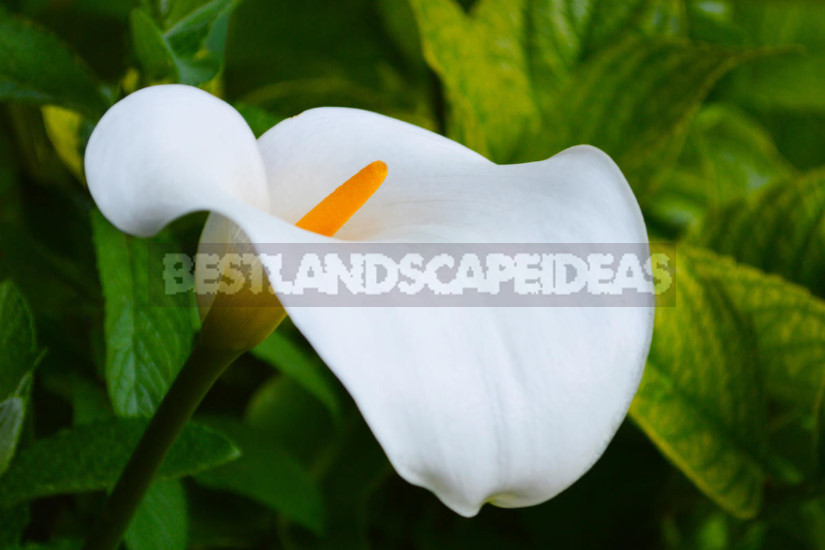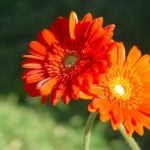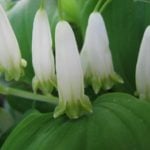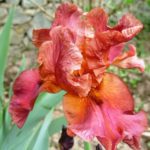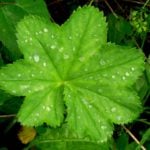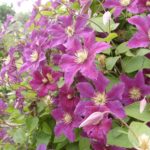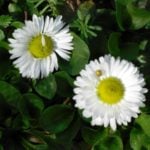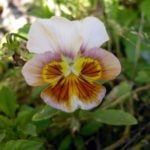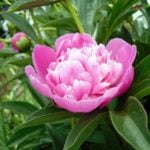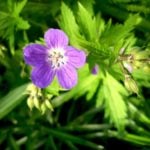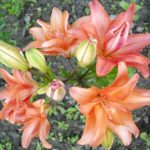Delightful Calla leaves no one indifferent, so many decide to have a flower on his windowsill. However, not everyone knows that this culture can grow not only at home but also on the plot. Of course, outdoors Calla will require greater attention, but for such a rare beauty that it is excusable.
Plant description
This plant is scientifically called Zantedeschia, although we, gardeners, accustomed to call it Calla. That’s settled. The birthplace of Calla, belonging to the family of Araceae, is South Africa, where it grows freely in the wild, choosing for its permanent residence marshy areas and swampy shores of water bodies.
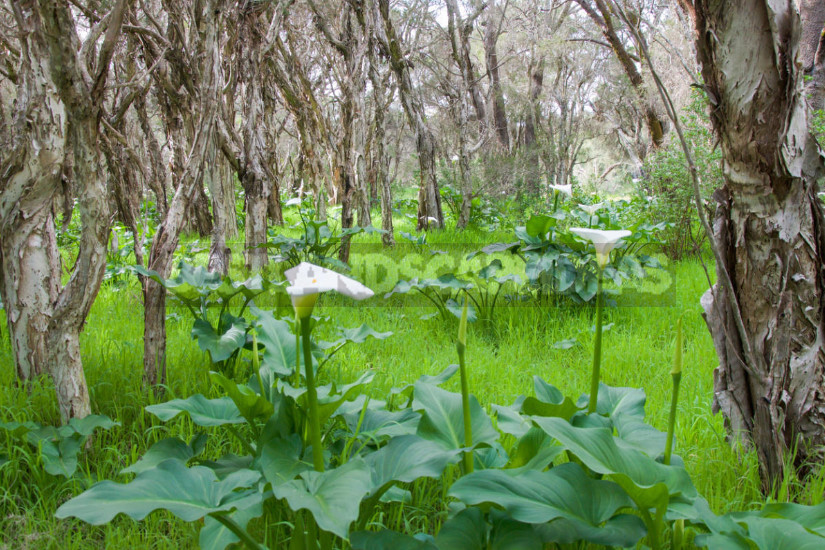
The whole ground part of the Calla is incredibly beautiful. Large heart-shaped leaves are painted in a rich dark green color, have a shiny surface and therefore look very decorative throughout the season. In some varieties the leaves can be variegated. And when there are high peduncles with elegant inflorescences, from the plant becomes impossible to look away-so many positive emotions gives this picture! And if earlier many Calla was associated exclusively with snow-white flowers, today, thanks to the efforts of breeders, you can plant varieties and hybrids of different colors in your garden.
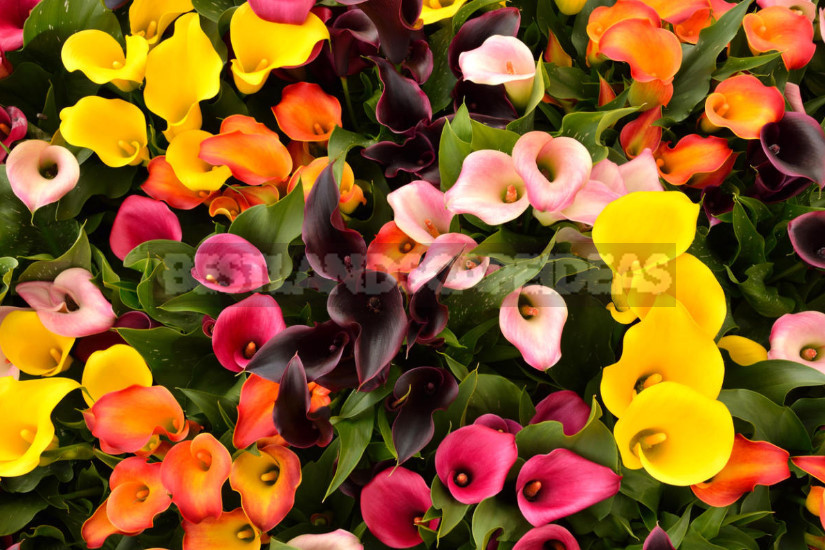
Depending on the variety, the size of the Calla Bush varies from 30 to 150 cm, which means that this flower can be selected a variety of options for placement in the flower garden: planted on the edge of the flower bed, in the background or in the center of the group composition. No less impressive Calla will look in a single landing.
It will bloom luxuriantly in the shaded corners of the garden, where other flower crops refuse to develop. In the open Sunny area of the plant produces less stems, but pleases more intense color of foliage and “colored” inflorescences.
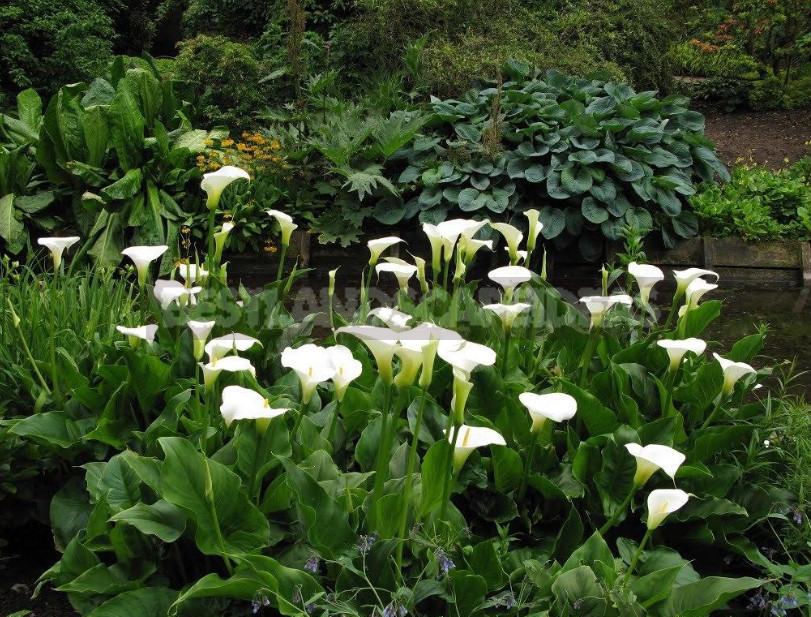
Individual approach
Going to plant in the suburban area is a perennial plant, it is important to take into account its origin. Depending on the type of root system Calla can be a tuber or branched rhizome.
Requirements for growing conditions they are also different. Rhizomatous Zantedeschia aethiopica and its hybrids will prefer to grow on the shore of a suburban pond or in the scattered shade of trees, where the soil remains moist longer. In such conditions, the Bush grows every year in breadth and turns into an amazing kurtina with a diameter of more than 1 m, decorated throughout the summer with spectacular inflorescences. The other two species do not like waterlogged soil and can easily grow in the sun, although the openwork shade will not refuse.
When growing at home, the difference can also be traced: Zantedeschia aethiopica leaves for a period of rest, and Z. elliottiana and Z. rehmannii does not shed.
All Callas are quite demanding on the composition of the soil. They grow well on fertile loose soils with acid or slightly acidic reaction. In our gardens, such land is rare, so the easiest solution would be to create a bed on the basis of purchased substrate, designed specifically for this exot. If you can not find a similar mixture in the store, you can fill a pre-dug pit or trench with a mixture of turf and leaf soil, sand and peat mixed in a ratio of 2:1:1:1, respectively.
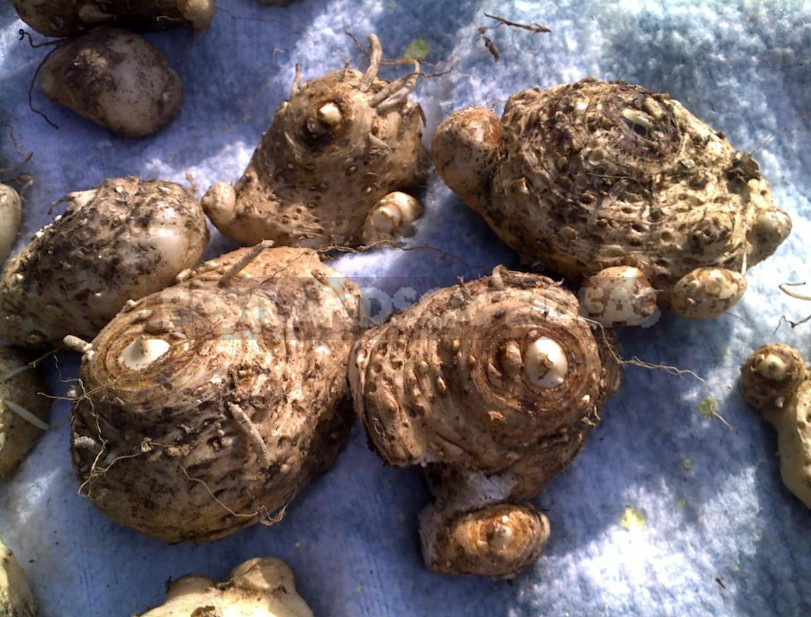
Landing
Garden Calla tubers are now sold in many specialty stores. Pre-purchased planting material is stored until spring in a dry place at a temperature of +5…+7°C (at higher rates, the tubers germinate).
In April, they are taken out of the” bins ” and sorted out, culling dried and rotten specimens. High-quality tubers are treated with a solution of any fungicide and planted with a tubercle up into separate flower pots with a moistened nutrient substrate, sinking into 2-3 cm.the Containers are kept at a temperature of +20…+22°C, periodically moistening the soil in them, and with the appearance of sprouts are exposed to light.
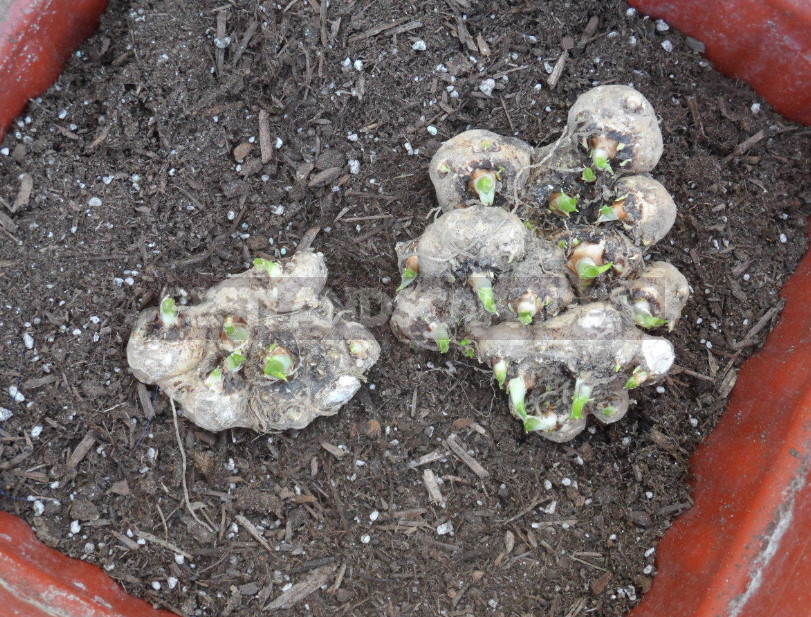
With the advent of sustainable warming hardened seedlings planted in a flower bed in the wells with a depth of 8-10 cm Between the low-growing varieties can withstand an interval of approximately 20 cm, average height of species planted no closer than 30-40 cm to each other, and tall Calla give more freedom, having not less than 50-60 cm
When handling plants from pots are very careful-the Calla is very fragile root system. After that, slightly compacted soil around the seedlings and watered planting.
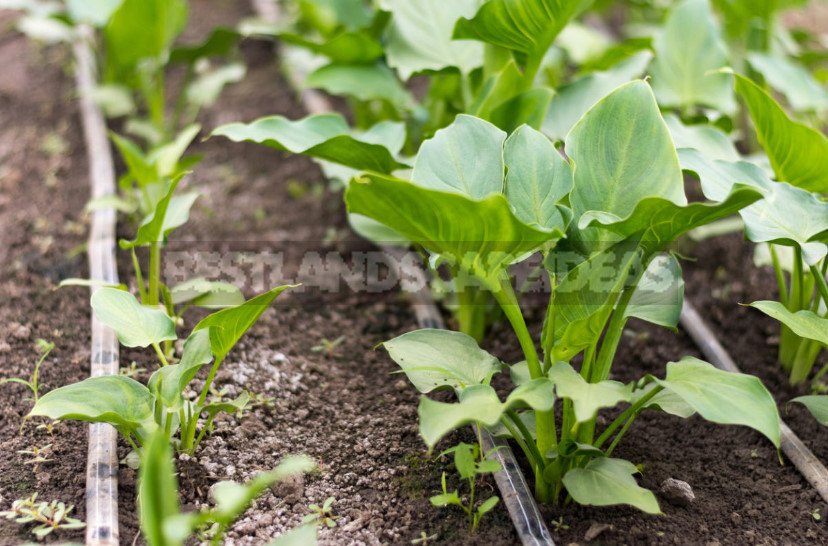
Calla tubers can be planted directly in the open ground without prior germination. This is done after the threat of return frosts has completely passed. But in this case you will have to wait longer for the appearance of peduncles.
Planting of rhizomatous species of Calla is best done in the autumn. Planting material can be purchased in garden nurseries, exhibitions or take from friends who are already growing such an exotic plant.
To do this, dig up an adult Bush and gently break off from the edge of its rhizome young root processes. They are placed with a lump of earth in separate pots and left to winter in a dark room at a temperature of +13…+15°C. in the Spring, the pots are brought into a warm room for germination, moisten the soil and then act according to the same algorithm as with tubers.
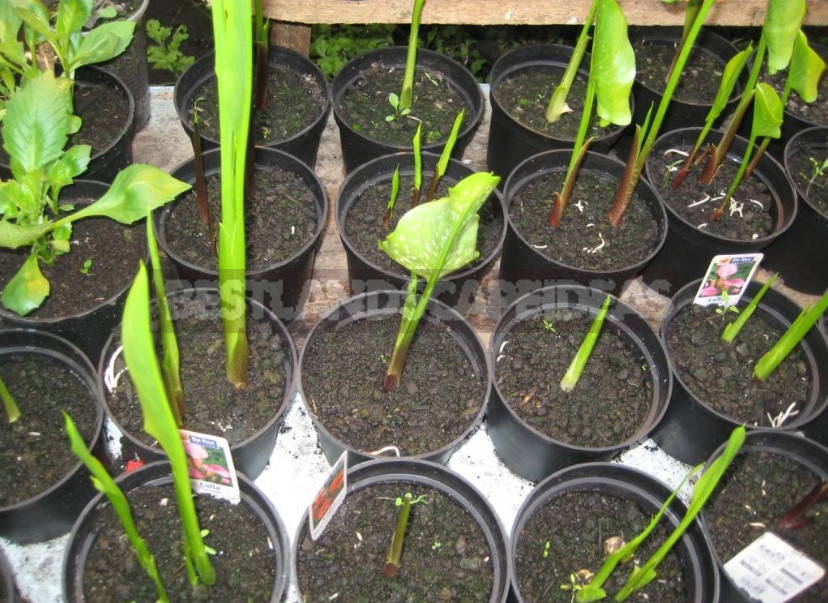
Maintenance
Moisture-loving Zantedeschia aethiopica during the season will require regular watering. Z. rehmannii and Z. elliottiana better not pour. To watering young plants begin only when the seedlings take root in the garden and begin to produce new leaves. Before that, it is not carried out at all (or only slightly moisten the soil when the soil dries) to “young” formed a strong root system. In the future, Calla watered 1-2 times a week or more (depending on the amount of precipitation), preventing any drying or waterlogging of the soil under the plants.
To the roots of the plants receive adequate amount of oxygen after every watering is necessary to loosen the soil around bushes and to prevent the emergence on the soil of the dense cover. At the same time in the aisles remove weeds. Some gardeners specially run on a bed with Callas of earthworms which help to loosen soil under plants in a natural way and to enrich it with humic connections.
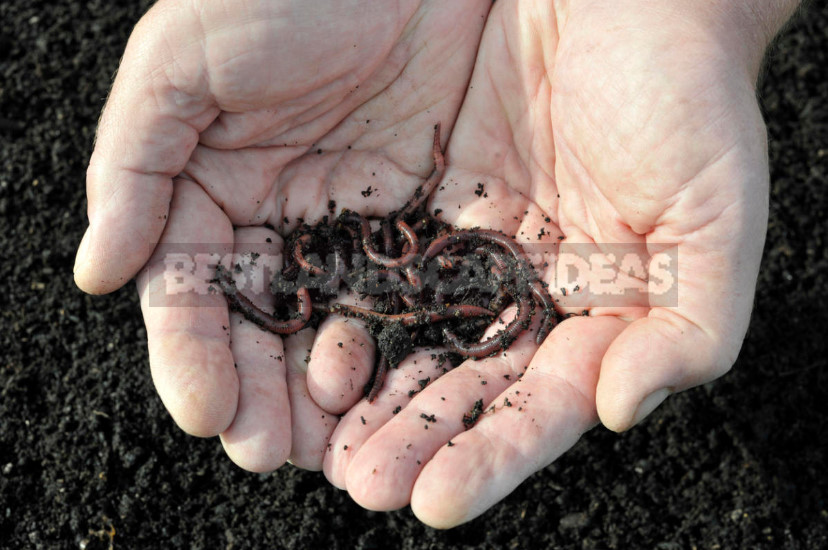
In order to Bush Calla had a lush shape and gave numerous stems, it is necessary to provide a “high-calorie” food. If before planting, fill the bed with the above-described soil mixture and make 40-50 g of complex mineral fertilizer for each m², in the future you can do without additional fertilizing.
Otherwise, a couple of weeks after planting seedlings in the ground begin to carry out regular feeding at intervals of 14-20 days. To do this, it is better to use special drugs.
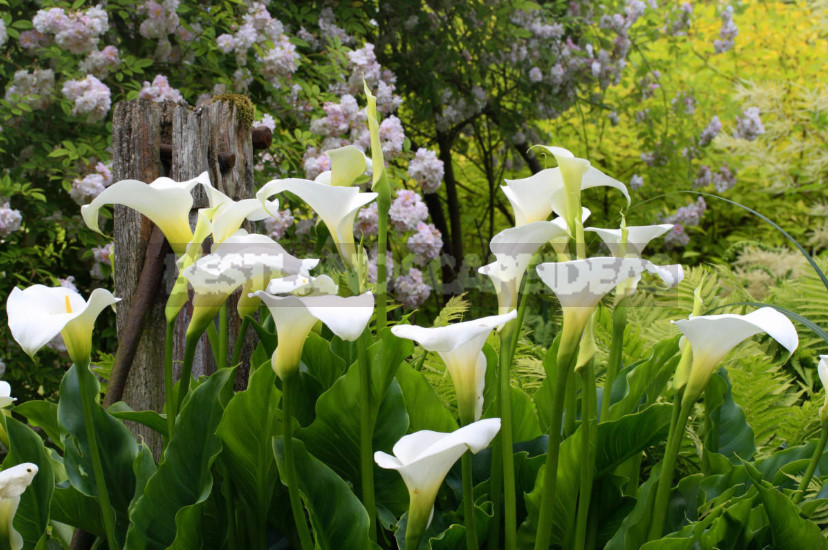
When fertilizing Calla lilies should be restricted to doses of nitrogen-containing drugs that have a negative impact on the strength of its flowering, and the appearance of the first flower stalks makes sense to increase the dose of potassium. To do this, throughout the flowering period under each Bush is made in dry form by 1 tablespoon of potassium sulfate, evenly distributing the fertilizer around the plant and plugging into the soil with a hand hoe. If the soil on the site is neutral or alkaline, during the season at intervals of a month, the bushes are further watered with water, slightly acidified with vinegar or citric acid.
With proper care, this African is not susceptible to diseases, it is also of little interest to pests. Therefore, after flowering, it will require only the removal of shoots with wilted inflorescences, which reduce its decorative effect and delay the nomination of new stems.

Types and varieties
As already mentioned, Callas are divided into two types – tuber and rhizome. On the basis of these varieties derived many varieties that can be successfully grown on the garden plot.
It is worth noting that the varieties, the ancestor of which was “Ethiopian”, often have classic white inflorescences (sometimes greenish) and are characterized by tall Bush. But rose red yellow Z. rehmannii and Z. elliottiana have given rise to a short “colored” varieties of blossoms which can have a very diverse shade. The following are the most striking varieties of Calla lilies.
- Variety ‘Ascari’ grows up to 70 cm and attracts the attention of large inflorescences rich cherry hue with amazing yellow edging on the edges. Blooms from June to September.
- Variety ‘Picasso’ reaches a height of 70-80 cm, has a very decorative dark green leaves with white specks. In June, produces numerous peduncles with snow-white “glasses”, painted inside in a dark purple hue. Blooms for 3 months.
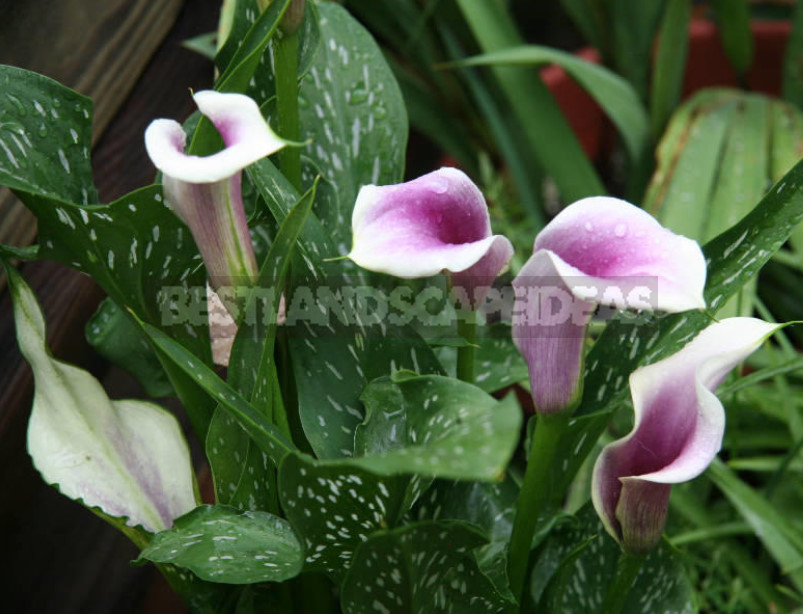
- Variety ‘Garnet Glow’ forms a compact shrub height of 50-55 cm with a lush rosette of large heart-shaped leaves of rich green hue. In early summer, it appears numerous inflorescences amazing pomegranate color, painted on the outside in a peach shade. Blooms for 3 months.
- Variety ‘Black Star’ has spectacular inflorescences maroon, almost black color and narrow spear-shaped leaves. Bush this variety grows up to 60-70 cm, blooms all summer.

- Variety ‘Best Gold’ grows up to 60-70 cm, characterized by bright yellow inflorescences that look incredibly impressive against the background of dark green foliage. Flowering lasts all summer.
- Variety ‘Selina’, growing no higher than 40 cm, will attract the attention of catchy orange-red inflorescences. Decorative variety adds light green speckled foliage. Flowering long-from June to September.
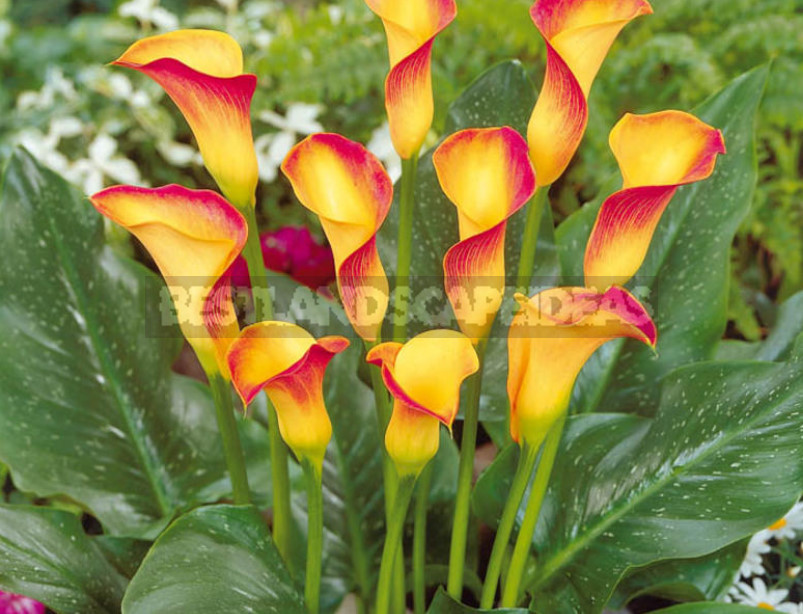
Planted on the site, Calla will not only give great aesthetic pleasure during its long flowering, but also, according to popular belief, will bring good luck and prosperity to its owner.
